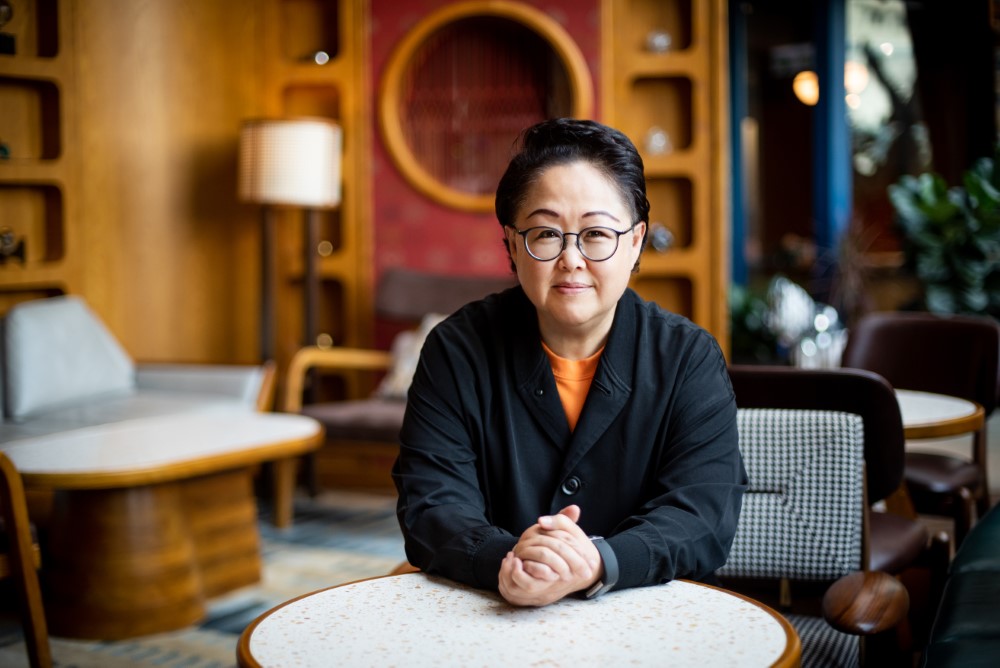How Do You Buy A Birthday Gift?
By Kelvin CHEUNG, Director of Training at Good Lab
It was recently my birthday, and I got some presents. A gift can be very generic, or very personalised, it’s not about how much the gift is, or what brand it is. For me, it is about how much thought was given. I’m pleased to say I got some very special gifts from my wife that I will treasure and use everyday, which served as inspiration for this article.

Before you stop reading, don’t worry, this article isn’t about my birthday…it’s about human-centred design. One question that I get asked often when talking about Design Thinking is, what kind of research methods do you use to understand your users? When I explain that it is an in-depth interview process, the usual reply is, ‘we conduct regular surveys and focus groups on our users, when you use all these empathy maps, personas, and user journey mapping, what’s the difference? Sounds…expensive and time consuming.’ In this article, I will explain the differences between these methods, using the theme of birthday presents as an analogy. Enjoy.
Surveys
Let’s survey a group of men about what they want for their birthdays. After a careful construction of a survey, you use various online and face-to-face methods to collect information. While statistically you’ll get the most answers, and it’ll be fairly quick to get the answers and come up with a top ten list, or list of suggestions on what’s on ‘trend’ in everyone’s mind like this , it’ll probably lead to a nice present, but won’t be too memorable in the long term.
Focus Groups
Let us think of a better way to get insight. A focus group of 12 men like me. That is, in their late 30s, married, with kids, and living in Hong Kong. You can get much more specific if you want. Income level, education level, etc. Sounds simple. Get a sounding board of 12 men to give feedback on a variety of items. Get them into a room and get them to share their feelings and insights with a person to facilitate. Just picture that in your mind. You already know and have heard…this isn’t going to work. Things get awkward. None of these people know each other. They’re unlikely to share their true feelings. Answers will just be generic ‘men items’ and be skewed towards replies that are ‘acceptable’ to those around them. Are the answers really the answers they want to give? Or the answers you want to get? Many articles have shown the limitations and faults that are entrenched in focus groups. While you’ve shown you’ve done your homework with ‘results’, the results of a focus group like this would be very hard to use for any major decision, and you’ll probably have lots of disputes about the results as well.
Human-centred Design
So that leaves us with a more one-on-one approach using less intrusive methods. From the outside, while it may seem much more time consuming, you’ll get a much more fruitful result from it. Observation, discussion, and using tools like empathy maps, customer journey maps, and then building user personas out of the results. Open ended questions and active listening. In my case, my wife had naturally been doing this everyday, and had secretly been building a profile on me.
Of course Birthday presents for one person isn’t the same as creating a product or solution for a group of people, you say. However, time and time again, we’ve seen once you’ve followed the process of deep listening and understanding, commonalities of needs will emerge that will resonate across the community and stakeholder groups.
At Good Lab, through our various projects over the years, the one-to-one approach has been proven much more effective in getting valuable and unique insights with which the stakeholders could move forward together. By building a relationship, active listening and understanding the problems from their point-of-view, we’ve been able to get deeper and more accurate insights to what they’re actually thinking.

Take for example, our community innovation project in Shek Wu Hui, it was after interviewing dozens of stakeholders individually and over several times did the needs and vision of the future start becoming clear of creating a district-based educational programme featuring the historical and environmental attractions in the area. This was the ‘big’ idea that many people supported, an idea that would never have surfaced in a survey or a focus group.
Everyone wants ‘breakthrough’ and ‘innovation’. The fact is, to quote Albert Einstein, ‘We can’t solve problems by using the same kind of thinking we used when we created them’. We have to believe that we’ve actually done all that is possible with the traditional methods, and we need to go deeper and be more thorough. Yes, using human-centric methods are different from what we’ve used in the past, but that’s exactly why we use them, to get more impactful and resonating results!
So I bet you want to know what I got right?
• A necklace with a cross that I can wear everyday, as I had stopped wearing the one my grandma gifted to me. My grandma passed away this year, and the necklace is my memory of her, and it came loose once and I almost lost it. So my wife bought me something that’d be more ‘replaceable’. Now I’ll think of both my wife and my grandma when I wear the necklace!
• A cheap keychain laser pointer. As she noticed when I teach or do presentations, I was pointing with my finger at a very big screen, without much clarity. A very nice observation and I love the practical gift! I’ll think of her everytime I teach!
• A 200-piece family portrait puzzle of my family to make with my daughters. I love my family and love fun ways we can do family activities together…now only if it comes with a half-day free to do this…
So the next time you shop for a birthday present, start thinking early, and start noticing and taking notes early to really ‘wow’ that person!
P.S. Of course, by reading this article, it reminds you that you need to buy a gift for someone soon, you’ll be pleased to know that there’s a Design Thinking workshop created by Stanford d.school just for that purpose! Check it out here! We’ve done it before in workshops and it’s a good way to introduce people to Design Thinking!
























 Hands-on Experience
Hands-on Experience 








































